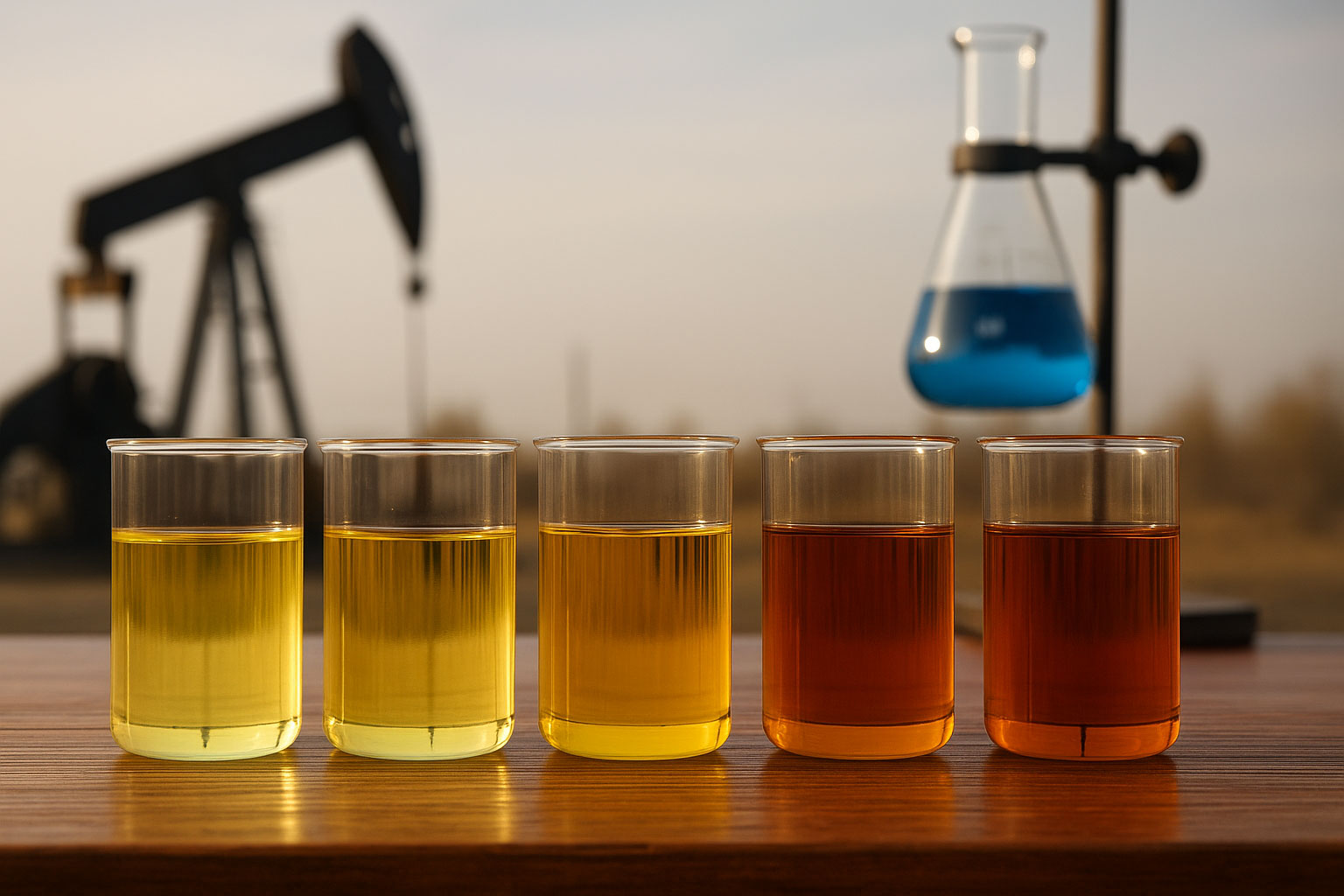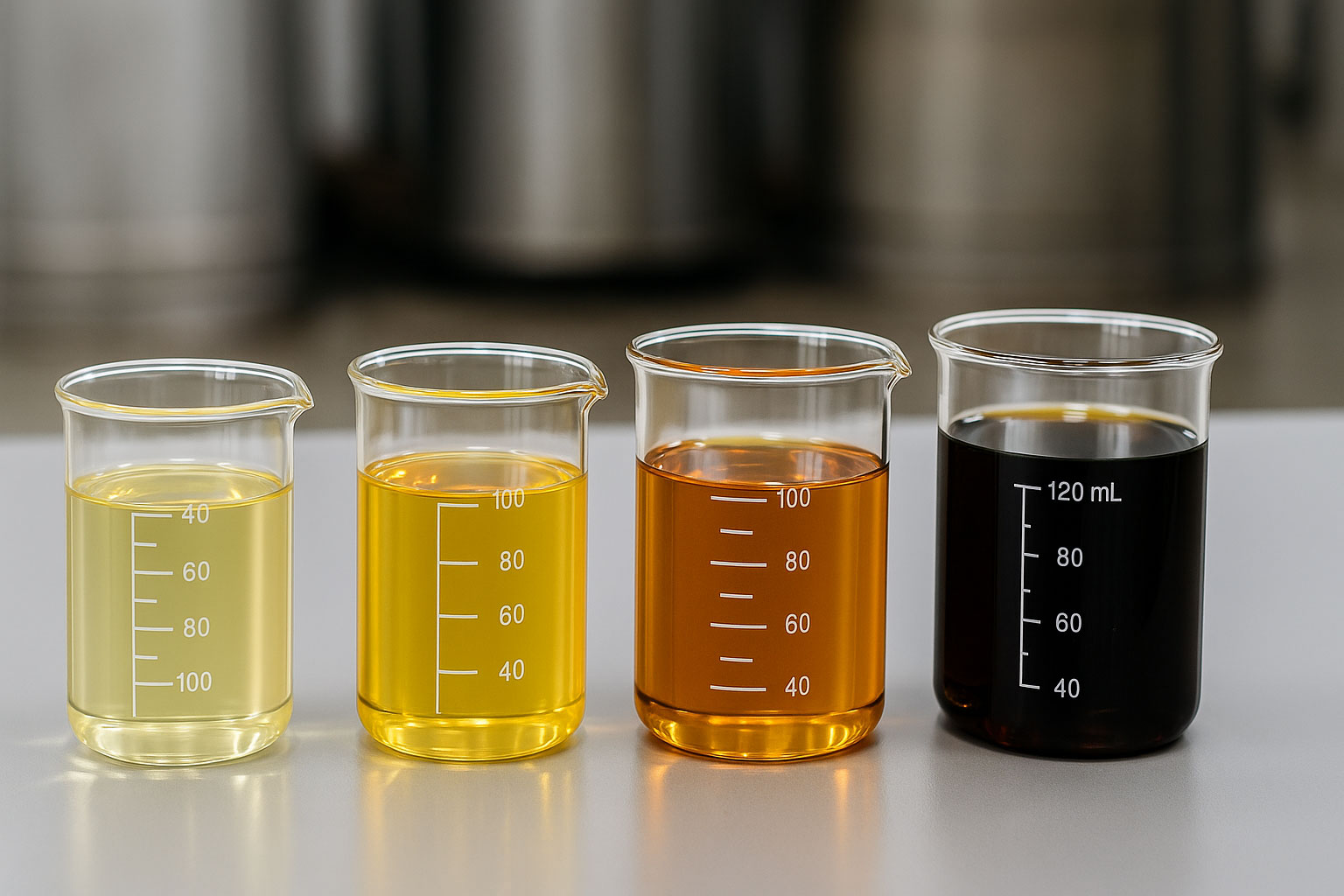
Understanding Types of Lubricants: Base Oil Groups
In today’s high-performance industrial world, lubricants are more than just friction reducers — they are engineered fluids designed to protect, optimize, and prolong the life of machinery. At the core of every lubricant lies the base oil , a fundamental ingredient that determines the lubricant’s physical and chemical behavior.
In this guide, we’ll break down the different base oil groups as defined by the American Petroleum Institute (API) and explain their characteristics, refining methods, and best-use scenarios — all with a focus on reliability in harsh environments like Dubai, UAE.
What Makes a Good Lubricant?
While the application may vary — from industrial compressors to high-performance engines — the characteristics of a high-quality lubricant remain consistent. A lubricant’s base oil plays a central role in achieving these traits, supported by specialized additives. Below are the essential properties of a high-performing lubricant, especially for demanding industrial environments like the Middle East:
-
High boiling point and low pour point – Ensures fluidity at low temperatures and stability at high heat.
-
High viscosity index (VI) – Provides consistent performance across varying temperatures.
-
Oxidation and thermal stability – Prevents degradation over time under thermal stress.
-
Corrosion and rust resistance – Protects metal surfaces against environmental and operational wear.
-
Good demulsibility – Allows the lubricant to effectively separate from water.
-
Hydraulic stability – Maintains performance under pressure and in hydraulic systems.
These properties are largely influenced by the type of base oil used in the formulation — which brings us to the core topic.
Base Oil Composition: The Foundation of Lubricants
All lubricants begin with base oil, typically comprising 70% to 90% of the finished product. The rest consists of performance-enhancing additives. Depending on their chemical origin and refining process, base oils fall into three primary types:
-
Mineral oils – Derived from refining petroleum crude oil.
-
Synthetic oils – Chemically engineered, offering superior stability and performance.
-
Biolubricants – Made from renewable sources such as vegetable oils.
The base oil's group classification directly impacts performance, environmental impact, and cost — a key consideration for operators in regions like Dubai, where ambient temperatures and equipment stress levels are high.
Let’s explore the five API base oil groups in detail.
Group I Base Oils: The Traditional Choice
Group I base oils are the oldest category and are produced using a solvent refining process — a simpler and more cost-effective method compared to modern techniques. These oils typically contain:
Temperature range: 0°C to 65°C (32°F to 150°F)
Color: Amber to golden brown
Common uses: Industrial gear oils, process oils, marine lubricants
While Group I base oils offer basic lubrication capabilities, their limited oxidation stability and higher impurity levels make them less suitable for high-performance or temperature-sensitive applications. However, due to their low cost, they are still widely used in less demanding operations.
Group II Base Oils: The Industry Standard
Refined through hydrotreating or hydrocracking, Group II base oils offer a step up in purity and performance. Their chemical structure is more saturated, resulting in:
Color: Clear and colorless
Oxidation resistance: Much better than Group I
Price point: Slightly higher than Group I, but still cost-effective
Group II oils are now considered the standard choice across many industrial and automotive applications. They strike a strong balance between cost-efficiency and stability, especially in hot climates like Dubai, where thermal load on machinery is significant.
🛠️ Fun fact: Many modern engine oils sold in the UAE today use Group II as their base due to its excellent oxidation stability and availability.
Group III Base Oils: The Premium Mineral Option
Although still derived from crude oil, Group III base oils undergo severe hydrocracking and hydroisomerization, resulting in a base stock that rivals synthetic oils in performance. These oils are characterized by:
Color: Water-clear
Performance: High oxidative stability, excellent thermal resistance
Classification: Technically mineral oil — but often marketed as synthetic in many regions, including the UAE, due to their refined chemical structure
Group III oils are ideal for modern high-performance engines, automatic transmissions, and industrial systems operating under extreme conditions. Their enhanced cleanliness and consistency also make them suitable for extended drain intervals — a valuable feature in industries seeking lower maintenance costs and fewer shutdowns.
Industry Insight: Group III base oils are gaining traction in Dubai's lubricant market due to growing demand for fuel-efficient and low-emission formulations.
Group IV Base Oils: True Synthetics (PAOs)
Group IV base oils are pure synthetic hydrocarbons, specifically polyalphaolefins (PAOs). Unlike Group I–III, which are derived from crude oil, Group IV oils are chemically synthesized from smaller molecules like ethylene.
Key properties:
-
VI: >120 (often significantly higher)
-
Excellent thermal and oxidative stability
-
Outstanding low-temperature performance
-
Longer life and wider operational temperature range
These oils are widely used in aviation, motorsports, offshore equipment, and any application where extreme temperature conditions exist — making them highly relevant in both cold storage facilities and high-heat desert operations in Dubai.
Note: PAOs are more expensive than Group III, but their performance in severe environments often justifies the investment.
Group V Base Oils: The Specialty Class
Group V base oils include all base stocks not covered under Groups I–IV. These are often specialty oils designed to enhance performance characteristics when blended with other groups — particularly Group IV PAOs.
Common types of Group V oils:
-
Esters (e.g., polyolesters): Excellent thermal stability and detergency
-
Polyalkylene glycols (PAGs): Water-soluble and ideal for compressor fluids
-
Silicone oils: Superior temperature and oxidation stability
-
Phosphate esters: High fire resistance
-
Biolubricants: Derived from vegetable oils, biodegradable
Group V oils are often used in aviation turbines, refrigeration systems, environmentally sensitive applications, and high-performance synthetic blends. In many industrial lubricant formulations, small quantities of Group V esters are added to improve solvency, detergency, and seal compatibility — crucial for maintaining equipment efficiency in demanding climates like Dubai’s.
Example: A PAO-based compressor oil may include a polyolester to boost its oxidative stability and performance at elevated temperatures.
Choosing the Right Base Oil: Practical Guidance for Industry
Selecting the appropriate base oil group is not just a technical decision — it’s a strategic one. The choice should be based on:
-
Operating temperature range
-
Load and stress on equipment
-
Environmental factors (humidity, dust, ambient heat)
-
Service interval requirements
-
Budget vs. performance trade-offs
In hot climates like the United Arab Emirates, where machinery often operates under intense thermal and environmental stress, base oils with high oxidative resistance, thermal stability, and longer life cycles — such as Group II+, Group III, and Group IV (PAOs) — offer the best return on investment.

Base Oils and Your Bottom Line
At SiNDA Lubricants Company L.L.C, headquartered in Dubai, we understand that base oil quality directly influences equipment lifespan, energy efficiency, and downtime prevention. Our formulations are built with precision — combining top-tier base stocks and performance-driven additive systems — to deliver lubrication solutions that perform reliably in harsh industrial environments.
Choosing the right lubricant starts with choosing the right base oil. Let us help you make the smart choice.

 icons at the top
right corner of the subsection.
icons at the top
right corner of the subsection.